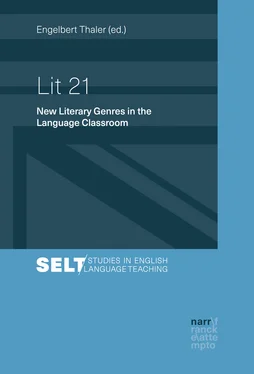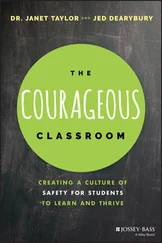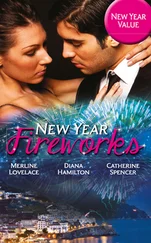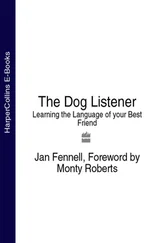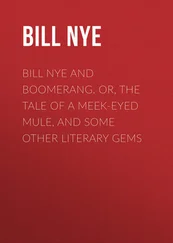Progression LiteratureRepresentatives of progression literature put a heavy emphasis on the past, pursue (an often subjective) truth, imitate how people perceive time and events in their lives, and usually conclude with open-endedness, leaving readers to form their own ideas on the characters’ futures.Example: Me & Lee – How I Came to Know, Love and Lose Lee Harvey Oswald by Judyth Vary Baker (2010)
Flash Fiction Shorties, i.e. short narrative texts, are nothing new as Ernest Hemingway is said to have written the first piece with his 6-word story “For sale, baby shoes, never worn”. With the advent of the Internet, microfiction, however, has experienced a real boom (Botha 2016).Example: Shorties – Flash Fiction in Language Teaching by Engelbert Thaler (2016c)
BizarroThis genre of weird literature contains both strange and fascinating, thought-provoking and funny elements by depicting an unstable universe where the inexplicable becomes the norm and incongruities are made flesh.Example: Shatner Quake by Jeff Burk (2009), a novel about every character that Star Trek ’s lead actor William Shatner has ever played
5 Teaching 21 stCentury Literary Genres
Based on the preceding chapters, the following decalogue of TEFL suggestions may help you meeting the demands of Lit 21.
1 Assess the quality of the text/genre. Is it trash or treasure? However, it is anything but easy to distinguish between the 3 K’s: Kunst, Kitsch, Kommerz .
2 Judge the suitability of the genre for your learner group. Gran-Lit may not be the most appropriate text type for young adults.
3 Evaluate each individual work. Even highly praised works by distinguished Nobel Prize winners like Never Let Me Go by Kazuo Ishiguro contain long and dreary passages in the first half of the book.
4 Consider reluctant readers . Multi-modal literary texts can be the answer here as they “enable the struggling reader, motivate the reluctant one, and challenge the high-level learner” (McTaggart 2008: 32). Dual coding can ease understanding, thus helping the struggling reader; comics may encourage reluctant ones to read more because of their positive attitude towards this genre; a close study of text-picture relationships can challenge advanced learners.
5 Employ FVR (free voluntary reading) and rely on extensive reading, fun reading, reading for enjoyment – and your classroom library (Thaler 2008).
6 Do not shy away from DEAR (Drop everything and read) – under two conditions: first, everybody must choose a book and read, and second, all must be quiet.
7 Encourage “thinking out of the box” – which may be all the more important in the COS era, i.e. the age of the competence obsession syndrome.
8 Select suitable reading approaches. Many Lit 21 pieces need not be studied along the segment or straight through approach. The sandwich approach, appetizer approach, topic approach, and patchwork approach are suitable alternatives (Thaler 2016b).
9 Make use of intermediality (intertextuality). Numerous film, TV, music and videogame adaptations for many modern works are available (Thaler 2018, 2009).
10 Balance trad fic and Lit 21. Incorporate modern texts into literature instruction as we have pre-millennial fiction and post-millennial fiction, and beside the DWEMs (Dead White English Males), there are also the LANGs (living authors and new genres). Cuncta fluunt .
Alvermann, Donna/Gillis, Victoria/Phelps, Stephen (2013). Content Area Reading and Literacy. Succeeding in Today’s Diverse Classrooms . Boston: Pearson.
Annesley, James (2006). Fictions of Globalization . London: Continuum.
Baetens, Jan/Frey, Hugo (2015). The Graphic Novel . New York: Cambridge University Press.
Beck, Ulrich (2012 [2009]). World at Risk . Cambridge: Polity Press.
Bell, Alice/Ensslin, Astrid/Rustad, Hans (2014). Analyzing Digital Fiction . New York: Routledge.
Blake, Robert (2013). Brave New Digital Classroom . Washington, DC: Georgetown University Press.
Bland, Janice (2013). Children’s Literature and Learner Empowerment . London: Bloomsbury.
Boehm, Gottfried/Mitchell, Thomas (2009). Pictorial versus Iconic Turn: Two Letters. Culture, Theory and Critique 50:2–3, 103-121.
Booker, Keith (ed.) (2013). Dystopia . Ipswich, Mass: Salem Press.
Botha, Marc (2016). Microfiction. In: Einhaus, Ann-Marie (ed.), The Cambridge Companion to the English Short Story . New York: Cambridge University Press, 201-220.
Burdge, Anthony (2006). Graphic Novels. The Oxford Encyclopedia of Children’s Literature . Volume 2. Oxford: Oxford University Press, 166-167.
Delanoy, Werner (2017). Picturebooks, Comics and Graphic Novels. In: Da Rocha, Karin/Haidacher-Horn, Agnes/Müller-Caron, Amy (eds.), Picture That! Leykam: Graz, 13-27.
Delanoy, Werner/Eisenmann, Maria/Matz, Frauke (eds.) (2015). Learning with Literature in the EFL Classroom . Frankfurt am Main: Peter Lang.
Dudeney, Gavin/Hockly, Nicky/Pegrum, Mark (2013). Digital Literacies. Research and Resources in Language Teaching . Harlow: Pearson.
Elsner, Daniela/Helff, Sissi/Viebrock, Britta (eds.) (2013). Films, Graphic Novels & Visuals. Developing Multiliteracies in Foreign Language Education. An Interdisciplinary Approach . Berlin: Lit.
Friesen, Calle (2011). 21st Century Literary Genres . Retrieved from: www.slideshare.net/darinjohn2/21st-century-literary-genres-by-calle-friesen(last accessed: 12/12/2018).
Godbey, Margaret (2010). The Encyclopedia of the Novel . Retrieved from: https://onlinelibrary.wiley.com/doi/book/10.1002/9781444337815(last accessed: 12/12/2018).
Gohrisch, Jana/Schmidt-Haberkamp, Barbara (2017). Cosmopolitan/ Global/Planetary Fictions: The Uses and Abuses of Comparative Approaches. In: Berns, Ute/Mathieson, Jolene (eds.), Anglistentag 2016 Hamburg Proceedings . Trier: WVT, 211-217.
Gross, Peter (1994). Die Multioptionsgesellschaft . Frankfurt am Main: Suhrkamp.
Hall, Geoff (2005). Literature in Language Education . Basingstoke: Palgrave Macmillan.
Hammer, Julia/Eisenmann, Maria/Ahrens, Rüdiger (eds.) (2012). Anglophone Literaturdidaktik. Zukunftsperspektiven für den Englischunterricht . Heidelberg: Winter.
Hammond, Adam (2016). Literature in the Digital Age. An Introduction . Cambridge: Cambridge University Press.
Harris, Violet (ed.) (1997). Using Multiethnic Literature in the K-8 Classroom . Norwood, Mass: Christopher-Gordon.
Horton, Emily (2014). Contemporary Crisis Fictions . Basingstoke: Palgrave Macmillan.
Jay, Paul (2001). Beyond Discipline? Globalisation and the Future of English. PMLA 116:1, 32-47.
Jonneg, Susann (2017). Blogging about New York City. Einen Blogpost über NYC verfassen. Englisch 5 bis 10, 2/38, 20-25.
Kalantzis, Mary/Cope, Bill (2012). Literacies . Cambridge: Cambridge University Press.
Kimes-Link, Ann/Steininger, Ivo (2012). Erzählkonventionen einer „graphic novel“ untersuchen. Der Fremdsprachliche Unterricht Englisch 46/117, 14.
Koskimaa, Raine (2011). Cybertext Challenge. Teaching Literature in the Digital World. In: Thomas, Michael (ed.), Online Learning 2 . Los Angeles: Sage, 131-145.
Kovach, Elizabeth (2016). Culture Ontologies after 9/11 . Trier: WVT.
Kramsch, Claire (2006). From Communicative Competence to Symbolic Competence. The Modern Language Journal 90, 249-252.
Lanier, Jaron (2018). Ten Arguments for Deleting Your Social Media Accounts Right Now . London: Bodley Heade.
Читать дальше
